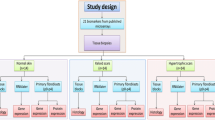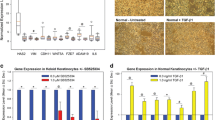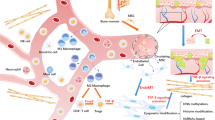Abstract
Keloids are benign skin tumors and are the effect of a dysregulated wound-healing process in genetically predisposed patients. They are characterized by formation of excess scar tissue beyond the boundaries of the wound. Keloids are often confused with hypertrophic scars because of an apparent lack of morphologic differences. The molecular distinction between scars and keloid is still controversial and, until today, there is no appropriate treatment yet for keloid disease. In this study, we have found, for the first time, p53 mutations in both hypertrophic scar and keloids fibroblasts from cultured cells to various extents. Since p53 plays a central role in the DNA damage response by inducing cell cycle arrest and/or apoptotic cell death, we also set up time course experiments making cell cultures at different times to investigate the phenomenon of apoptosis and its involvement in the process of pathological scarring in both hypertrophic scars and keloids. The extent of apoptosis in this study was investigated by DNA fragmentation and MTT assays, propidium iodide staining, p53 expression, and subcellular distribution. Moreover, the correlation of apoptosis and ROS levels in keloid and hypertrophic scars fibroblasts was assessed. Understanding the molecular mechanisms that determine the regulation of apoptosis during wound healing might allow us to therapeutically modulate these pathways so that apoptotic cell death is reactivated in dysregulated and hypertrophic cells.







Similar content being viewed by others
References
Slemp AE, Kirschner RE (2006) Keloids and scars: a review of keloids and scars, their pathogenesis, risk factors and management. Curr Opin Pediatr 18:396–402. doi:10.1097/01.mop.0000236389.41462.ef
Armour A, Scott PG, Tredget EE (2007) Cellular and molecular pathology of HTS: basis for treatment. Wound Repair Regen 15(Suppl 1):S6–S17. doi:10.1111/j.1524-475X.2007.00219.x
Berman B, Bieley HC (1995) Keloids. J Am Acad Dermatol 33:117–123. doi:10.1016/0190-9622(95)90035-7
Ehrlich HP, Desmouliere A, Diegelmann RF et al (1994) Morphological and immunochemical differences between keloid and hypertrophic scar. Am J Pathol 145:105–113
Atiyeh BS, Costagliola M, Hayek SN (2005) Keloid or hypertrophic scar: the controversy: review of the literature. Ann Plast Surg 54:676–680. doi:10.1097/01.sap.0000164538.72375.93
De Felice B, Wilson RR, Nacca M, Ciarmiello LF, Pinelli C (2004) p63 isoforms expression in human keloids. Mol Genet Genomics 272:28–34
Nishi H, Isaka K, Sagawa Y, Usuda S, Fujito A, Ito H, Senoo M, Kato H, Takayama M (1999) Mutation and transcription analyses of the p63 gene in cervical carcinoma. Int J Oncol 15:1149–1153
Park BJ, Lee SJ, Kim JI, Lee SJ, Lee CH, Chang SG, Park JH, Chi SG (2000) Frequent alteration of p63 expression in human primary bladder carcinomas. Cancer Res 60:3370–3374
Yamaguchi K, Wu L, Caballero OL, Hibi K, Trink B, Resto V, Cairns P, Okami K, Koch WM, Sidransky D, Jen J (2000) Frequent gain of the p40/p51/p63 gene locus in primary head and neck squamous cell carcinoma. Int J Cancer 86:684–689. doi:10.1002/(SICI)1097-0215(20000601)86:5<684::AID-IJC13>3.0.CO;2-M
Friedman DW, Boyd CD, Mackenzie JW, Norton P, Olson RM, Deak SB (1993) Regulation of collagen gene expression in keloids and hypertrophic scars. J Surg Res 55:214–222. doi:10.1006/jsre.1993.1132
De Felice B, Ciarmiello LF, Argenziano C, Nacca M, Mondola P, Damiano S, Garbi C (2007) Differential p63 and p53 expression in human keloid fibroblasts and hypertrophic scar fibroblasts. DNA Cell Biol 26:541–547. doi:10.1089/dna.2007.0591
Saed GM, Ladin D, Olson J, Han X, Hou Z, Fivenson D (1998) Analysis of p53 gene mutations in keloids using polymerase chain reaction-based single-strand conformational polymorphism and DNA sequencing. Arch Dermatol 134:963–967. doi:10.1001/archderm.134.8.963
Ladin DA, Hou Z, Patel D, McPhail M, Olson JC, Saed GM, Fivenson DP (1998) p53 and apoptosis alterations in keloids and keloid fibroblasts. Wound Repair Regen 6:28–37. doi:10.1046/j.1524-475X.1998.60106.x
Prives C, Hall PA (1999) The p53 pathway. J Pathol 187:112–126. doi:10.1002/(SICI)1096-9896(199901)187:1<112::AID-PATH250>3.0.CO;2-3
Sionov RV, Haupt Y (1999) The cellular response to p53: the decision between life and death. Oncogene 18:6145–6157. doi:10.1038/sj.onc.1203130
Vousden KH, Lu X (2002) Live or let die: the cell’s response to p53. Nat Rev Cancer 2:594–604. doi:10.1038/nrc864
Hollstein M, Sidransky D, Vogelstein B, Harris CC (1991) p53 mutations in human cancers. Science 253:49–53. doi:10.1126/science.1905840
Vogelstein B, Lane D, Levine AJ (2000) Surfing the p53 network. Nature 408:307–310. doi:10.1038/35042675
Cho Y, Gorina S, Jeffrey PD, Pavletich NP (1994) Crystal structure of a p53 tumor suppressor-DNA complex: understanding tumorigenic mutations. Science 265:346–355. doi:10.1126/science.8023157
Moll U, Riou G, Levine AJ (1992) Two distinct mechanisms alter p53 in breast cancer: mutation and nuclear exclusion. Proc Natl Acad Sci USA 89:7262–7266. doi:10.1073/pnas.89.15.7262
Bosari S, Viale G, Roncalli M, Graziani D, Borsani G, Lee AK, Coggi G (1995) p53 gene mutations, p53 protein accumulation and compartmentalization in colorectal adenocarcinoma. Am J Pathol 147:790–798
Greenlund LJ, Deckwerth TL, Johnson EM Jr (1995) Superoxide dismutase delays neuronal apoptosis: a role for reactive oxygen species in programmed neuronal death. Neuron 14:303–315. doi:10.1016/0896-6273(95)90287-2
Higuchi M, Honda, T, Proske RJ, Yeh ET (1998) Regulation of reactive oxygen species-induced apoptosis and necrosis by caspase 3-like proteases. Oncogene 17:2753–2760
Simon H-U, Haj-Yehia A, Levi-Schaffer F (2000) Role of reactive oxygen species (ROS) in apoptosis induction. Apoptosis 5:415–418. doi:10.1023/A:1009616228304
Lim IJ, Phan TT, Song C, Tan WT, Longaker MT (2001) Investigation of the influence of keloid-derived keratinocytes on fibroblast growth and proliferation in vitro. Plast Reconstr Surg 107:797–808. doi:10.1097/00006534-200103000-00022
Fischer SG, Lerman LS (1980) Separation of random fragments of DNA according to properties of their sequences. Proc Natl Acad Sci USA 77:4420–4424. doi:10.1073/pnas.77.8.4420
Sheffield VC, Cox DR, Lerman LS, Myers RM (1989) Attachment of a 40-base-pair G + C-rich sequence (GC-clamp) to genomic DNA fragments by the polymerase chain reaction results in improved detection of single-base changes. Proc Natl Acad Sci USA 86:232–236. doi:10.1073/pnas.86.1.232
Beck JS, Kwitek AE, Cogen PH, Metzger AK, Duyk GM, Sheffield VC (1993) A denaturing gradient gel electrophoresis assay for sensitive detection of p53 mutations. Hum Genet 91:25–30. doi:10.1007/BF00230217
Li SY, Ni JH, Xu DS, Jia HT (2003) Down-regulation of GluR2 is associated with Ca2+-dependent protease activities in kainate-induced apoptotic cell death in cultured rat hippocampal neurons. Neurosci Lett 352:105–108. doi:10.1016/j.neulet.2003.08.054
Derderian CA, Bastidas N, Lerman OZ, Bhatt KA, Lin SE, Voss J, Holmes JW, Levine JP, Gurtner GC (2005) Mechanical strain alters gene expression in an in vitro model of hypertrophic scarring. Ann Plast Surg 55:69–75. doi:10.1097/01.sap.0000168160.86221.e9
Moulin V, Larochelle S, Langlois C, Thibault I, Lopez-Vallé CA, Roy M (2004) Normal skin wound and hypertrophic scar myofibroblasts have differential responses to apoptotic inductors. J Cell Physiol 198:350–358. doi:10.1002/jcp.10415
Lu F, Gao J, Ogawa R, Hyakusoku H, Ou C (2007) Fas-mediated apoptotic signal transduction in keloid and hypertrophic scar. Plast Reconstr Surg 119:1714–1721. doi:10.1097/01.prs.0000258851.47193.06
Messadi DV, Le A, Berg S, Jewett A, Wen Z, Kelly P, Bertolami CN (1999) Expression of apoptosis-associated genes by human dermal scar fibroblasts. Wound Repair Regen 7:511–517. doi:10.1046/j.1524-475X.1999.00511.x
Tanaka A, Hatoko M, Tada H, Iioka H, Niitsuma K, Miyagawa S (2004) Expression of p53 family in scars. J Dermatol Sci 34:17–24. doi:10.1016/j.jdermsci.2003.09.005
Köse O, Waseem A (2008) Keloids and hypertrophic scars: are they two different sides of the same coin? Dermatol Surg 34:336–346. doi:10.1111/j.1524-4725.2007.34067.x
Borresen AL, Hovig E, Smith Sorensen B, Malkin D, Lystad S, Andersen TI, Nesland JM, Isselbacher KJ, Friend SH (1991) Constant denaturant gel electrophoresis as a rapid screening technique for p53 mutations. Proc Natl Acad Sci USA 88:8405–8409. doi:10.1073/pnas.88.19.8405
Liu W, Jiang Y-H, Li Y-L, Lin Z-H, Jiang H, Tan Q, Zhang J-L, Wang Z-M (2004) Experimental study on p53 gene mutation in keloid fibroblasts. Zhonghua Shao Shang Za Zhi = Chinese Journal of Burns 20:85–87
Duan HJ, Gao JH, Shen GY (2003) Cell cycle analysis and P53 gene mutation detection of fibroblasts derived from the surrounding skin of keloids. Zhonghua Zheng Xing Wai Ke Za Zhi 19:95–97
Liu YB, Gao JH, Duan HJ, Liu XJ (2003) Investigation of p53 gene mutations in keloids using PCR-SSCP. Zhonghua Zheng Xing Wai Ke Za Zhi 19:258–260
Yang A, McKeon F (2000) p63 and p73: p53 mimics, menaces, and more. Nat Rev Mol Cell Biol 1:199–207. doi:10.1038/35043127
Roos WP, Kaina B (2006) DNA damage-induced cell death by apoptosis. Trends Mol Med 12:440–450. doi:10.1016/j.molmed.2006.07.007
Bates S, Vousden KH (1999) Mechanisms of p53-mediated apoptosis. Cell Mol Life Sci 55:28–37. doi:10.1007/s000180050267
Hofseth LJ, Hussain SP, Harris CC (2004) p53: 25 years after its discovery. Trends Pharmacol Sci 25:177–181. doi:10.1016/j.tips.2004.02.009
Karen Vousden H (2006) Outcomes of p53 activation—spoilt for choice. J Cell Sci 119:5015–5020. doi:10.1242/jcs.03293
Helton ES, Chen X (2007) p53 modulation of the DNA damage response. J Cell Biochem 100:883–896. doi:10.1002/jcb.21091
Lloyd DR, Phillips DH, Carmichael PL (1997) Generation of putative intrastrand cross-links and strand breaks in DNA by transition metal ion-mediated oxygen radical attack. Chem Res Toxicol 10:393–400. doi:10.1021/tx960158q
Pierce GB, Parchment RE, Lewellyn AL (1991) Hydrogen peroxide as a mediator of programmed cell death in the blastocyst. Differentiation 46:181–186. doi:10.1111/j.1432-0436.1991.tb00880.x
Kasahara Y, Kazuyuki I, Yachie A et al (1997) Involvement of reactive oxygen intermediates in spontaneous and CD95 (Fas/APO-1)-mediated apoptosis of neutrophils. Blood 89:1748–1753
Watson RW, Rotstein OD, Jimenez M, Parodo J, Marshall JC (1997) Augmented intracellular glutathione inhibits Fas-triggered apoptosis of activated human neutrophils. Blood 89:4175–4181
Author information
Authors and Affiliations
Corresponding author
Rights and permissions
About this article
Cite this article
De Felice, B., Garbi, C., Santoriello, M. et al. Differential apoptosis markers in human keloids and hypertrophic scars fibroblasts. Mol Cell Biochem 327, 191–201 (2009). https://doi.org/10.1007/s11010-009-0057-x
Received:
Accepted:
Published:
Issue Date:
DOI: https://doi.org/10.1007/s11010-009-0057-x




